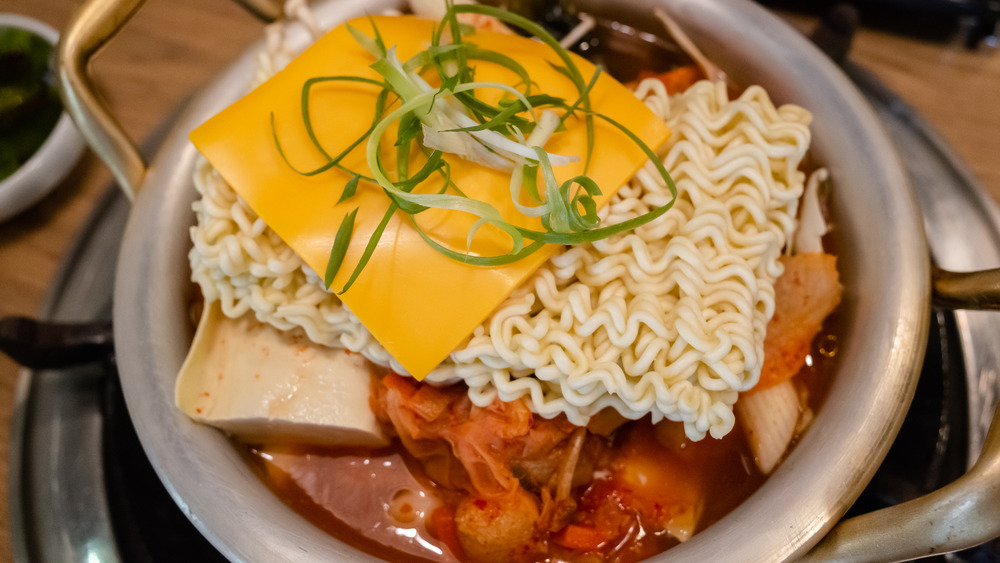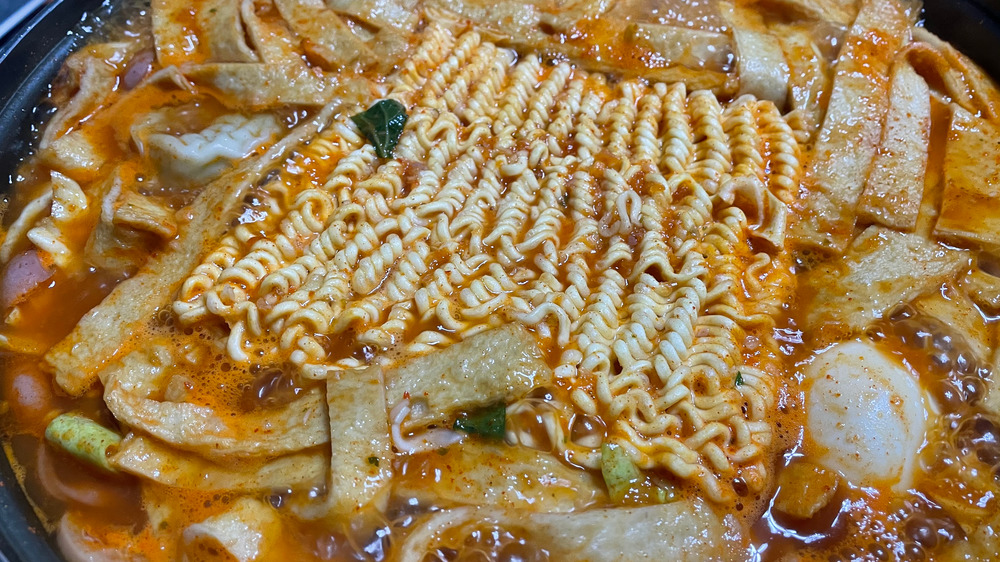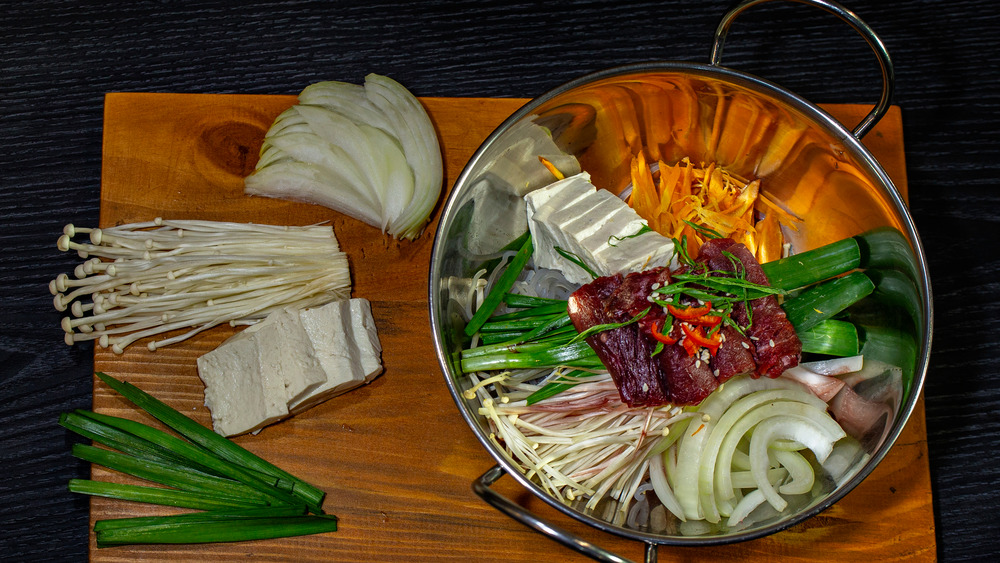The Fascinating History Of Budae Jjigae
If you were to order at random off a Korean restaurant menu and the item you picked was something called budae jjigae, your first reaction when the bowl arrived in front of you might well be "WTF is this stuff??" Bibimbap it isn't, nor does it resemble any of the other more traditional Korean dishes you're likely to encounter in a cookbook. It's got, what's that, Spam in there? And could that be baked beans? And cheese? Talk about your melting pot! But how did this multicultural mishmash come to be?
If you are at all familiar with Korean-American cooking, particularly of the more informal, afternoon snack-type variety, you might possibly have encountered the wonders of cheesy ramen, a dish that shares a similar backstory with budae jjigae. Long story short, the two-word answer that tells you (almost) everything you need to know about the origins of both dishes: Korean War. In fact, the English translation of "budae jjigae" speaks to its genesis, as Kimchee Bookings reveals that the words mean "army base stew."
The birth of something weird but yummy
The Korean War, just like any other war, didn't do much good for the people living on ground zero. In the aftermath, food was scarce, homes and farms lay in ruins, people were homeless and starving, but there was one new source of food: items obtained (one way or another) from the commissaries on American military bases. Thrifty yet creative Koreans took American cheese, franks and beans, Spam, and other exotic imports and stretched these out with the addition of vegetables, rice cakes, ramen noodles, and other Korean kitchen staples and flavored it to their liking with chili flakes, kimchi, and other spices.
Through the years this soup went through many names including, according to Kimchi Bookings, "Johnson Soup" after Lyndon B. Johnson, a president who post-dated the Korean War by about a decade. Unlike Hoover Stew, a similar American dish also bearing a president's name, it remained popular even when it was no longer an economic necessity. Today, some 65+ years later, there are many long-established restaurants specializing in budae jjigae and there's even budae jjigae-flavored instant ramen.
How to make your own budae jjigae
If you're not living in an area where there are any truly authentic Korean restaurants, meaning the ones catering to a primarily Korean clientele, you may never have encountered budae jjigae before since it's not the kind of thing that pops up on the menu of the kind of places that just specialize in Korean wings and bulgogi. If you're intrigued by the thought of this army base kitchen sink "Seoul food," Korean food blogger Seonkyoung Longest shares a recipe where east (kimchi, rice cakes, tofu, glass noodles, ramen, enoki mushrooms, and green onions) meets west (Spam, hot dogs, breakfast sausage, baked beans, and American cheese) and they both go swimming in a Korean-spiced sauce of rice wine, fish sauce, soy sauce, fermented soybean paste, and gochugaru.
Weird? Very. Delicious? That too. Still skeptical? Listen to the wise words of the late, great Anthony Bourdain (via Eater), a man who ate his way around the world but would always make room for a bowl of budae jjigae: "It's everything mama warned you about. And it's got it all, baby."


